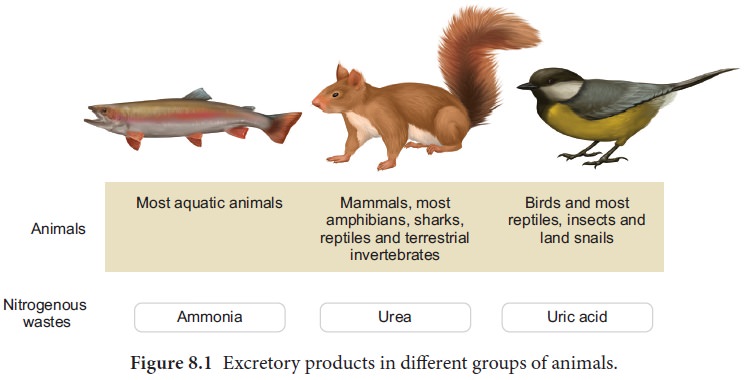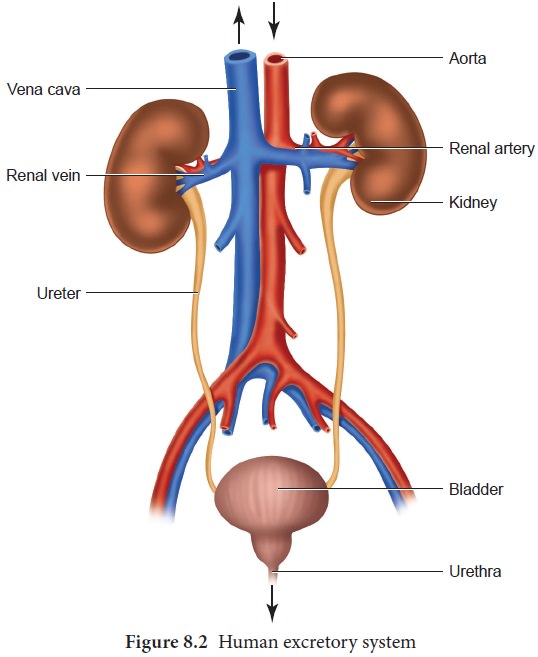Chapter: 11th Zoology : Chapter 8 : Excretion
Excretion
Excretion
Earliest animal life forms arose around 700 million
years ago. They were marine organisms like the modern sponges. Each cell of a
modern sponge is surrounded by sea water, but it maintains an intracellular
ionic composition different from that of the sea water. Evolution led to
changes in the organisation of the tissue layers followed by formation of
specialized external tissue layers. This provided a barrier between the
external environment and internal fluid resulting in the formation of
extracellular fluid. Major changes in osmoregulation and ionic regulation
occurred during the evolution of chordates. The ability to control
extracellular fluid composition was essential for the diversification of
animals to inhabit brackish water, fresh water and land. Animals that invaded
land had the risk of desiccation and were unable to excrete metabolic waste
directly into the water; hence there was a need for an alternate pathway to
dispose the nitrogenous wastes.
Most animals rely on kidneys to control ionic and
water balance. Some animals depend on external tissues such as the gills, skin
and digestive mucosa to collectively regulate three homeostatic processes
namely, osmotic regulation, ionic regulation and nitrogen excretion. Osmotic
regulation is the control of tissue osmotic pressure which acts as a driving
force for movement of water across biological membranes. Ionic regulation is
the control of the ionic composition of body fluids. The process by which the
body gets rid of the nitrogenous waste products of protein metabolism is called
excretion. Nitrogen excretion is the pathway by which animals excrete ammonia,
the toxic nitrogenous end product of protein catabolism. The removal of ammonia
or other metabolic alternatives such as urea and uric acid is linked to ionic
and osmotic homeostasis.
Fresh water vertebrates maintain higher salt
concentrations in their body fluids; marine vertebrates maintain lower salt
concentrations in their body fluids and terrestrial animals have more water in
their body than the surrounding hence tend to lose water by evaporation.
Osmoconformers are able to change their internal osmotic concentration with
change in external environment as in marine molluscs and sharks. Osmoregulators
maintain their internal osmotic concentration irrespective of their external
osmotic environment (example: Otters). Depending on the ability to tolerate
changes in the external environment, animals are classified as stenohaline and
euryhaline. The stenohaline animals can tolerate only narrow fluctuations in
the salt concentration (example: Gold fish), whereas the euryhaline animals are
able to tolerate wide fluctuations in the salt concentrations eg., Artemia, Tilapia and salmons.
The major nitrogenous waste products are ammonia,
urea and uric acid. Other waste products of protein metabolism are trimethyl
amine oxide (TMO) in marine teleosts, guanine in spiders, hippuric acid,
allantonin, allantoic acid, ornithuric acid, creatinine, creatine, purines,
pyramidines and pterines.


Related Topics